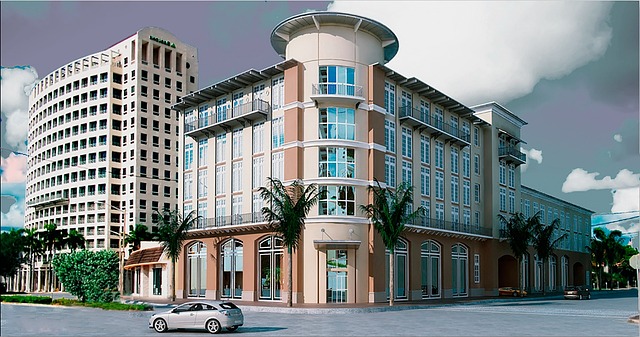In Singapore, after fulfilling a five-year occupation requirement, owners of Executive Condos (ECs) can consider upgrading to private condominiums, with the option to sell their EC on the open market. Post-MOP (Minimum Occupation Period), former EC residents must navigate financial regulations that include updated eligibility criteria, loan-to-value (LTV) ratios, and guidelines set by financial institutions like HDB (Housing & Development Board) and MAS (Monetary Authority of Singapore). These measures are designed to ensure market stability and support financial prudence. Prospective EC owners after the five-year mark should stay informed on the latest MAS/HDB guidelines and financial institution offerings to make educated decisions regarding refinancing or purchasing anew. The resale and subsale market for ECs has evolved, offering specialized loan packages that cater to the maturity and value appreciation of these properties. Buyers should explore various lenders to secure favorable LTV ratios and interest rates in this dynamic post-MOP financial landscape for Executive Condos After 5 Years.
Navigating the housing market can be a complex journey, especially for those considering an Executive Condo (EC) after its five-year Minimum Occupation Period (MOP). This article delves into the evolving landscape of EC loan guidelines, offering valuable insights for potential buyers and investors. We’ll explore how eligibility criteria have shifted over time, assess the financial implications of owning an EC post-MOP, and provide a comprehensive look at the updated loan guidelines applicable to EC owners beyond the fifth year. Additionally, we’ll examine the resale and subsale dynamics within the EC market after a decade, all from a loan perspective. Understanding these aspects is crucial for anyone looking to invest in an EC after the five-year mark, ensuring a well-informed decision that aligns with financial goals.
- Understanding the Evolution of Executive Condo (EC) Loan Eligibility Post-Five Years
- Assessing Your Financial Readiness for an EC After the Five-Year MOP
- Navigating the Updated Loan Guidelines for EC Owners Beyond the Fifth Year
- The Resale and Subsale Landscape of Executive Condos After a Decade: A Loan Perspective
Understanding the Evolution of Executive Condo (EC) Loan Eligibility Post-Five Years

Singapore’s property landscape offers unique housing options, among which Executive Condos (ECs) cater to the needs of public officers and members of the Singapore Armed Forces. After fulfilling the minimum occupation period of five years, ECs can be upgraded to private condominiums. The eligibility criteria for loans on these properties have evolved over time, reflecting changes in housing market dynamics and government policy adjustments.
Post-occupation year five, former EC residents interested in refinancing or obtaining new loans face specific guidelines. These are designed to ensure financial prudence and stability within the housing market. Banks and financial institutions typically assess applicants based on their loan-to-value (LTV) ratio, income stability, and repayment capacity. The Monetary Authority of Singapore (MAS) and the Housing & Development Board (HDB) regularly review these guidelines to adapt to economic shifts and maintain a healthy property market balance. As such, those considering an EC loan after the five-year mark should stay informed about the latest regulations and offerings from financial institutions. Understanding the nuances of these evolving guidelines is crucial for successful loan applications and sound financial planning post-occupation period.
Assessing Your Financial Readiness for an EC After the Five-Year MOP

When considering the purchase of an Executive Condominium (EC) after its five-year Minimum Occupation Period (MOP), it’s crucial to thoroughly assess your financial readiness. This period marks a significant milestone as owners can either sell the EC on the open market or upgrade to another property without restrictive penalties. Prospective buyers should evaluate their current financial situation, including income stability and savings, to ensure they can manage the mortgage repayments post-MOP. It’s also advisable to account for any potential increases in interest rates, which could impact your monthly payments.
Moreover, potential EC owners must consider the Total Debt Servicing Ratio (TDSR) and Mortgage Servicing Ratio (MSR) guidelines set by the Monetary Authority of Singapore (MAS). These ratios cap the amount of an individual’s monthly income that can be used for repaying various types of loans. For an EC after its five-year MOP, the loan-to-value (LTV) ratio will also play a role in determining the loan amount you are eligible for. By understanding these financial metrics and preparing accordingly, you can make a more informed decision about whether an EC fits your long-term housing plans after the MOP completion.
Navigating the Updated Loan Guidelines for EC Owners Beyond the Fifth Year

When an executive condominium, commonly known as an EC, reaches its fifth anniversary since completion and acquisition by its owner, it transitions into a property that is subject to the Market Restriction Period (MRP) guidelines. This period spans from the end of the initial five-year Minimum Occupation Period (MOP) until the 10th year. During this time, EC owners are bound by specific loan guidelines that differ from those applicable to private condominiums or public housing flat owners. For instance, should an owner wish to refinance their mortgage or secure a new loan after the fifth year, they must comply with the updated regulations set forth by financial institutions and regulatory bodies. These guidelines often include tighter loan-to-value (LTV) ratios, which may affect the amount of loan a homeowner can obtain. Additionally, EC owners should be aware of the Total Debt Servicing Ratio (TDSR) framework, which caps the proportion of a borrower’s monthly income that can be used for repaying existing debts. Navigating these updated loan guidelines requires careful consideration and consultation with financial advisors to ensure compliance and optimal financial planning post-MOP for ECs. Owners should stay informed about these changes as they can significantly impact the investment’s potential and the owner’s financial strategy after the fifth year.
The Resale and Subsale Landscape of Executive Condos After a Decade: A Loan Perspective

After a decade, the resale and subsale landscape of Executive Condos (ECs) in Singapore has evolved significantly. An EC after 5 years may present different loan opportunities compared to its initial market entry. The initial appeal of ECs lies in their design for middle-income families, offering a stepping stone to public housing, with benefits such as the ability to subletting or renting out the entire flat to Singaporeans when the owners lease yellow-dot premises. Over time, these properties have matured and are now part of a diverse resale market. Potential buyers looking into an Executive Condo after 5 years will find that the loan guidelines have adapted to this maturity, with financial institutions offering tailored loan packages that reflect the stability and value appreciation of these established residences.
The loan landscape for ECs has become more nuanced post-decade, with lenders considering factors such as the age of the unit, its condition, and the remaining lease to determine loan tenures and terms. An Executive Condo after 5 years may attract different financing options compared to a newer EC. Lenders now have a better grasp of the asset’s lifecycle and associated risks, which influences their lending criteria. Prospective buyers should be aware that loan-to-value (LTV) ratios might differ based on these factors, and interest rates could be adjusted accordingly. It’s crucial for buyers to engage with multiple financial institutions to understand the best possible terms available for an EC after 5 years, ensuring they make a well-informed decision in this dynamic market.
